Excerpts from Jim Conrad's
Naturalist Newsletter
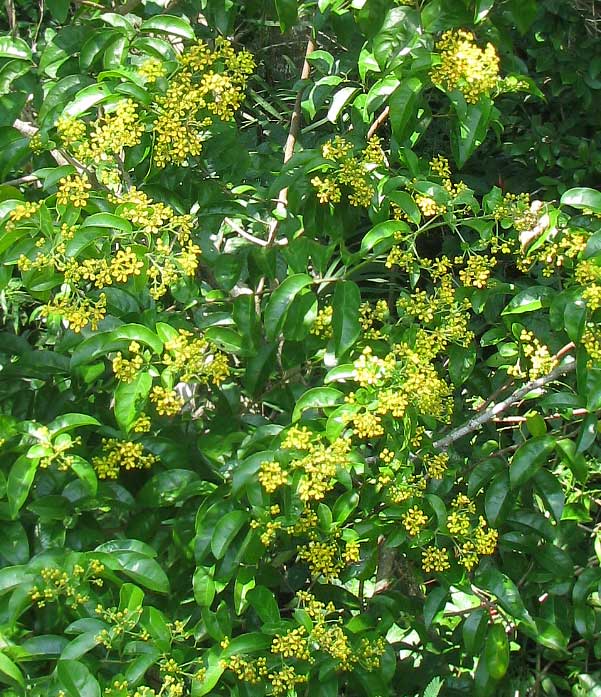
from the October 10, 2010 Newsletter issued from Hacienda Chichen Resort beside Chichén Itzá Ruins, central Yucatán, MÉXICO; limestone bedrock, elevation ~39m (~128ft), ~N20.676°, ~W88.569°
CIP-CHÉ ABLOOM
Nowadays here and there at woods edges you see masses of flowering branches maybe 15 feet tall (4.5m) just glowing with smallish yellow flowers. A branch of one is shown above. Closer up you can see the tree's simple, opposite leaves, and flowers with five "clawed" yellow petals below:
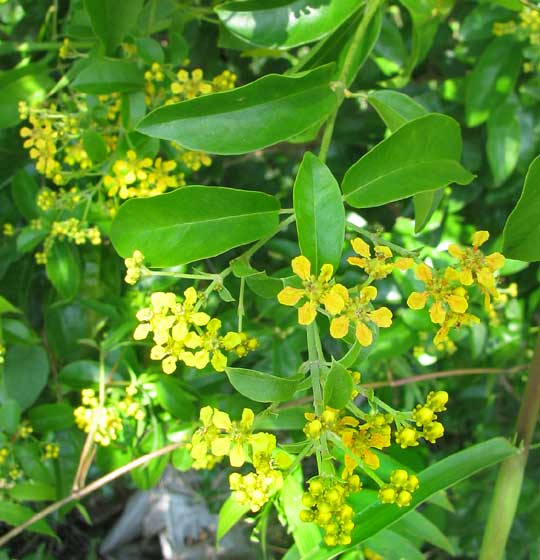
A close-up of a single flower is below:

In that picture the five spatula-like petals are easy enough to identify. From the elevated central area arise three slender, greenish styles (ovary necks) bearing stigmatic areas where pollen grains germinate. Clustered around the three styles are the stamens, the flat, paddle-shaped things below the brown anthers being staminodia, or sterile stamens. What's really interesting is the ring of shiny, oval items -- two between each pair of petal claws. Those are glands, a pair of them on each sepal. A view from below a flower showing the gland-pairs obscuring the sepals is shown below:
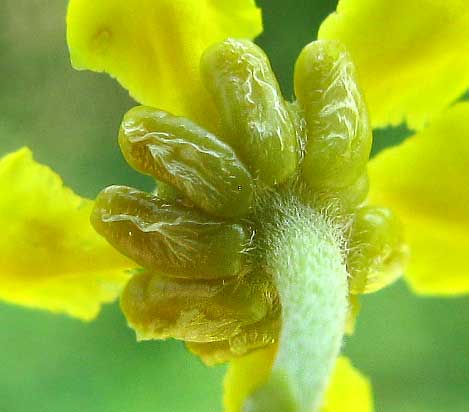
We've run into oversized sepal glands before, such as on pink Barbados-Cherry flowers, as shown at www.backyardnature.net/n/09/091122mr.jpg and yellow Nance, or Golden Spoon, flowers, as seen at www.backyardnature.net/n/09/091206ne.jpg.
The Barbados-Cherry, the Nance and the roadside tree we're talking about now all bear those large sepal-glands because they're in the same big family, the mostly tropical Malpighia Family, or Malpighiaceae. Members of the family are woody; no tree or bush well known to North Americans or Europeans belongs to that family.
Our roadside tree is TETRAPTERYS SCHIEDEANA. The local Maya, who call it Cip-Ché -- a name applied to several species with flowers like this -- have a high regard for it because of its miraculous healing powers. When you suffer "evil winds," a shaman with a handful of branches from this handsome tree can brush away your miseries. My shaman friend José explains that it equalizes the energies, also that there are three kinds of Cip-Ché, one with flowers, another with fruits, and another with nothing but leaves. I have found that often the Maya, even those very intimate with their local plants, don't recognize the fundamental relationship between all flowers and fruits.
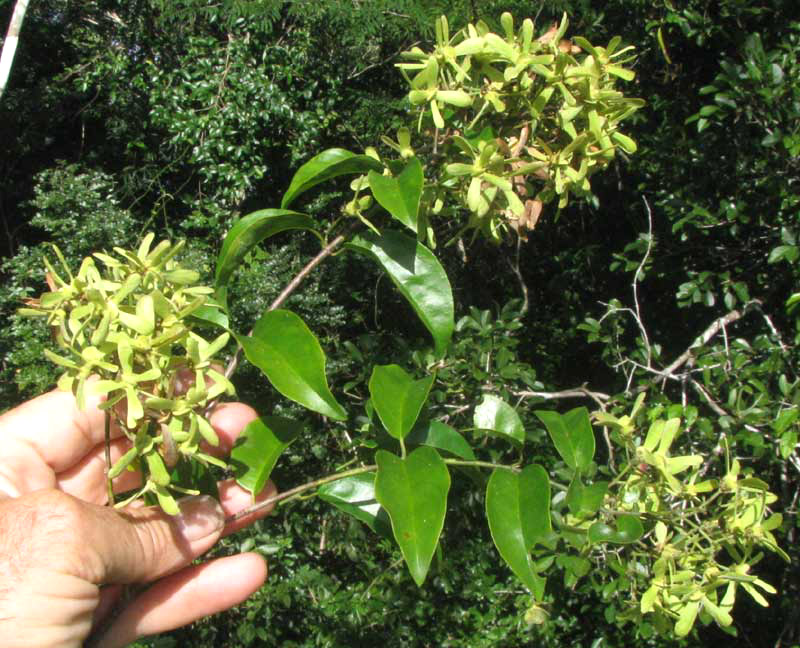
from the November 21, 2010 Newsletter issued from Hacienda Chichen Resort beside Chichén Itzá Ruins, central Yucatán, MÉXICO; limestone bedrock, elevation ~39m (~128ft), ~N20.676°, ~W88.569°
TETRAPTERIS
"Liana" is a word often used in the tropics to denote woody vines as opposed to herbaceous ones. On the road south of Pisté to Yaxuná a certain liana caught my eye because about ten feet up in a tree it was producing hand-sized clusters of greenish-yellow flowers that somehow didn't look quite right -- what's shown at the top of this page. As soon as the flowers were in hand I could see what the confusion was: They weren't flowers. Where the "petals" came together there were no sexual parts -- no stamens, no pistil -- just a sort of ridge, shown at below:

I was drawing a blank on what this liana possibly could be until on a "flower's" underside I saw what's shown below:
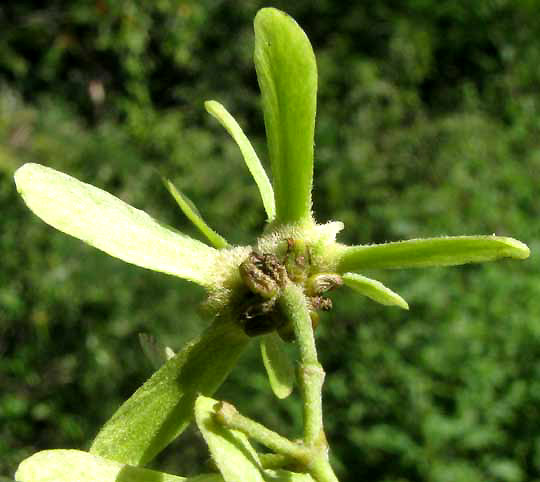
Those oval, brownish things are glands, two for each sepal -- though something appears to have eaten off a couple. We've seen several plants with exactly such sepal glands (most famously the highly edible, crabapple-like Barbados Cherry and Nance), so it was apparent that this curious liana was a member of the Malpighia Family, the Malpighiaceae. That's a large and important family in the tropics but hardly known in the North.
By doing an image-search on genus names I didn't recognize in the list of members of the Malphighia Family of this area it wasn't long until I got it. It's in the genus TETRAPTERIS, the name describing the fruits, "tetra" saying "four" and "pteris" meaning "wing": "Four-wing." Three mature, four-winged fruits, nicely adapted for wind dispersal, are seen below:
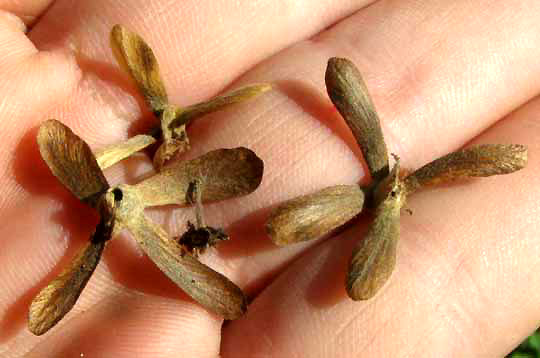
In the Yucatán we have two similar Tetrapteris species, T. seleriana and T. schiedeana, and with material available on the Internet I can't figure out which species we have.